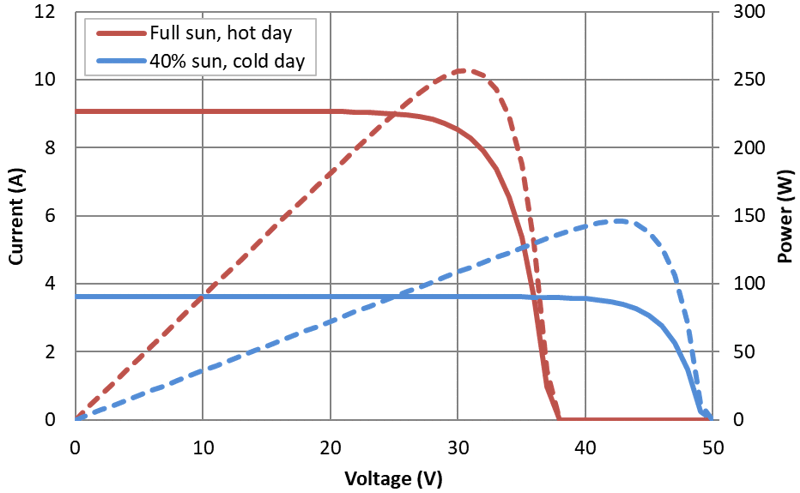SLYY225 December 2023 BQ25756
Battery charging for solar applications
More battery-powered electronics creates a need to charge batteries in any kind of environment. Referring back to the camping example, solar panels can charge a portable power station if no outlet is available; however, there are several factors that affect solar charging, including:
- Different solar panel ratings.
- Variable weather conditions.
- Partial shade.
It is important to find the maximum power point (MPP) from the solar panels – the point where the solar panel IOUT multiplied by the solar panel VOUT is the highest – in order to extract the highest charge current to charge the battery.
To discuss this further, let’s talk about the current-voltage (IV) graph for solar panels in Figure 7. The y-axis represents the IOUT of a solar panel, while the x-axis represents the VOUT of the solar panel. The objective of the IV graph is to find the MPP that the solar panel can produce based on weather conditions. Figure 7 demonstrates how the IV graph can change depending on weather conditions.
 Figure 7 IV curve based on weather
conditions.
Figure 7 IV curve based on weather
conditions.